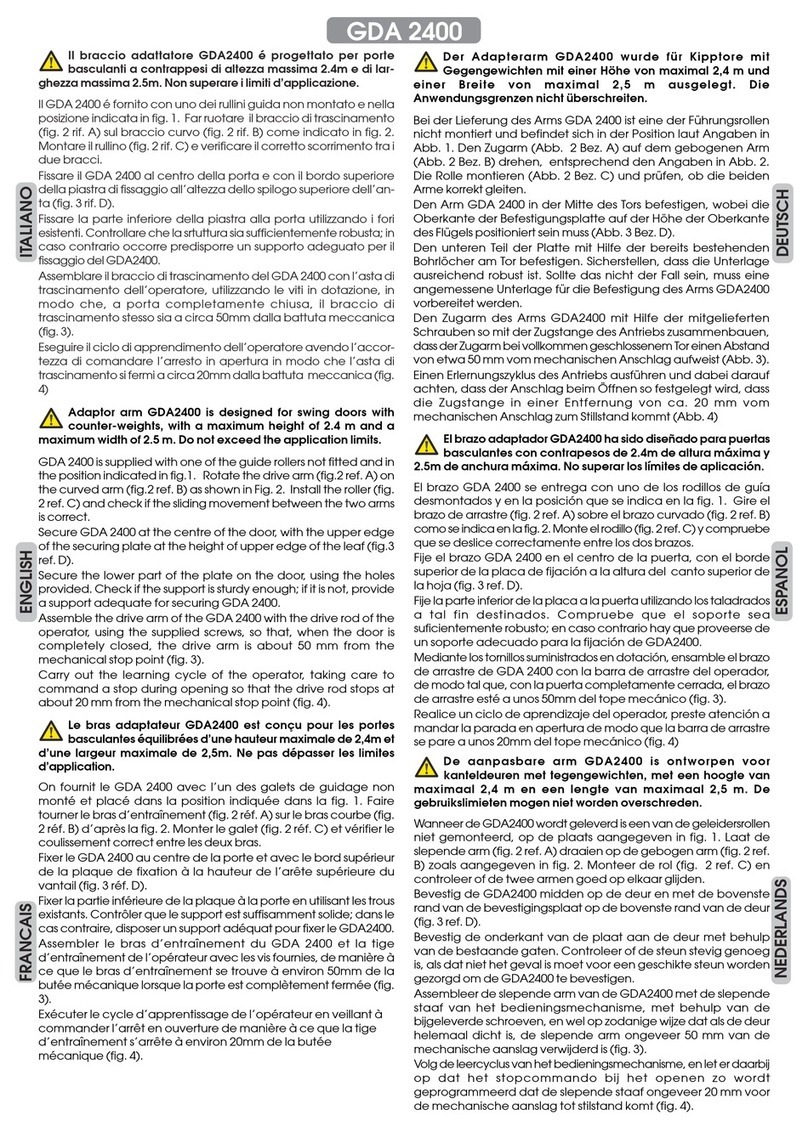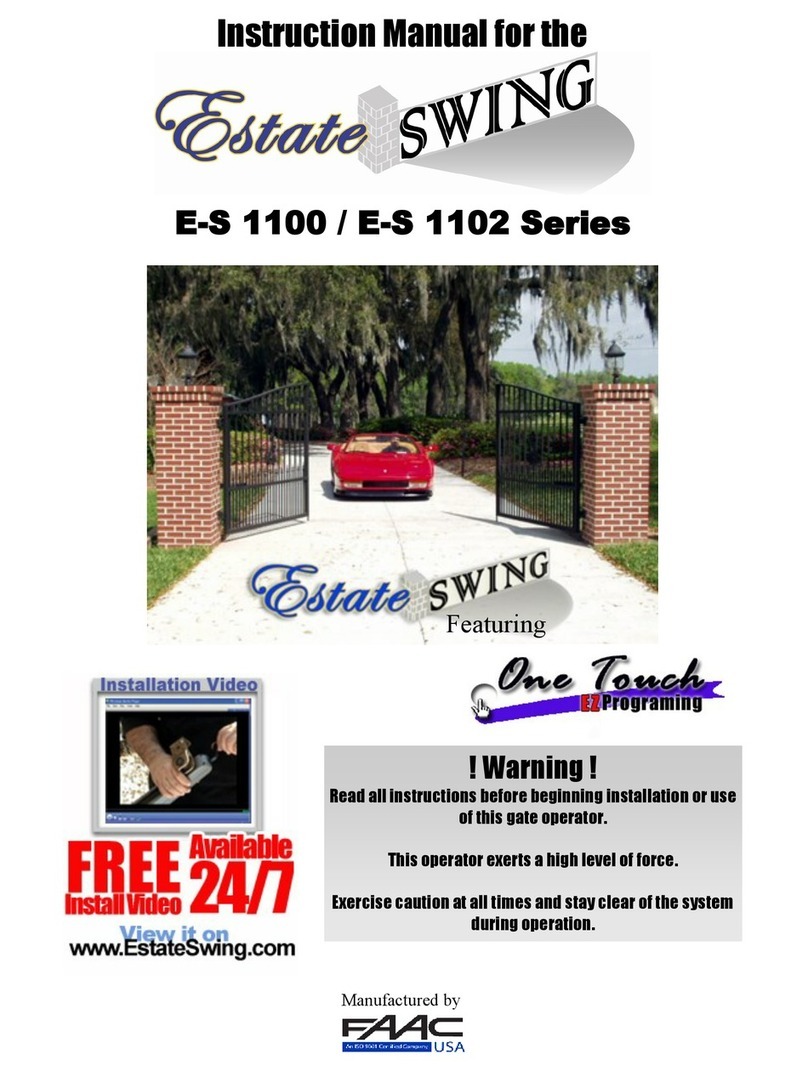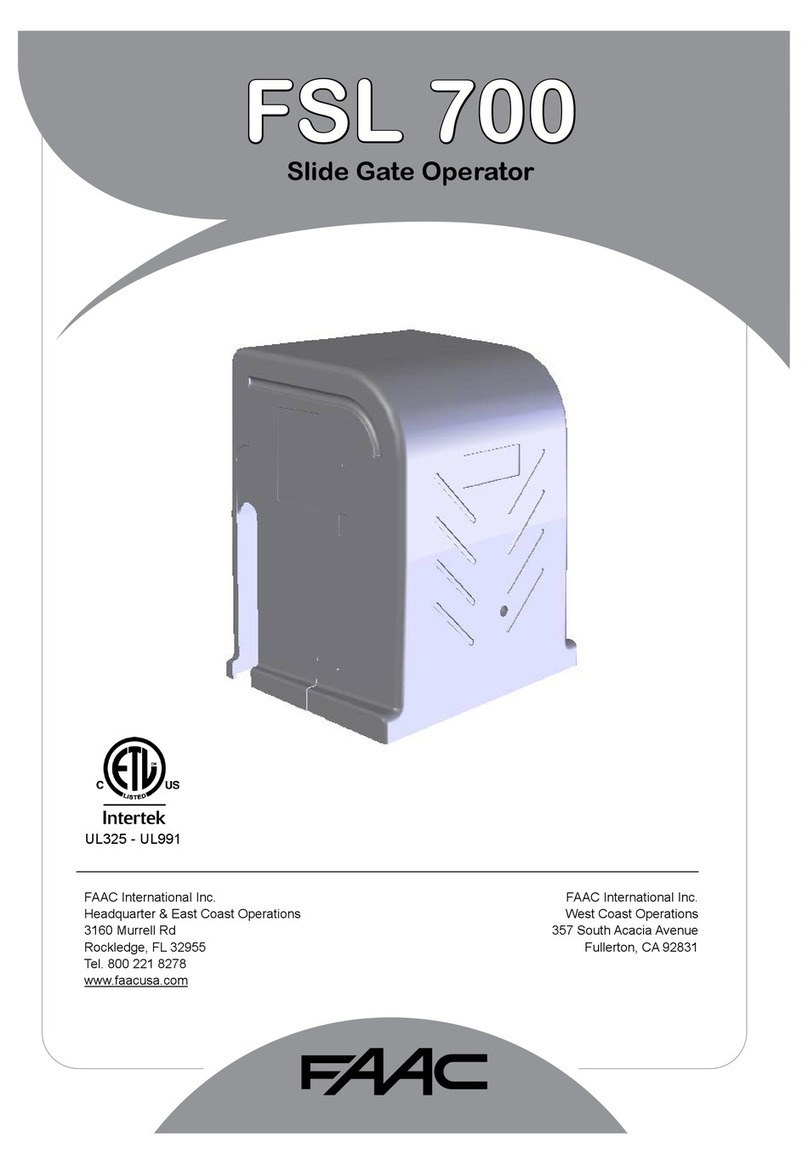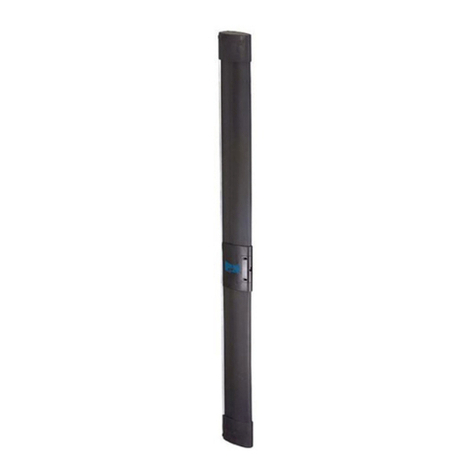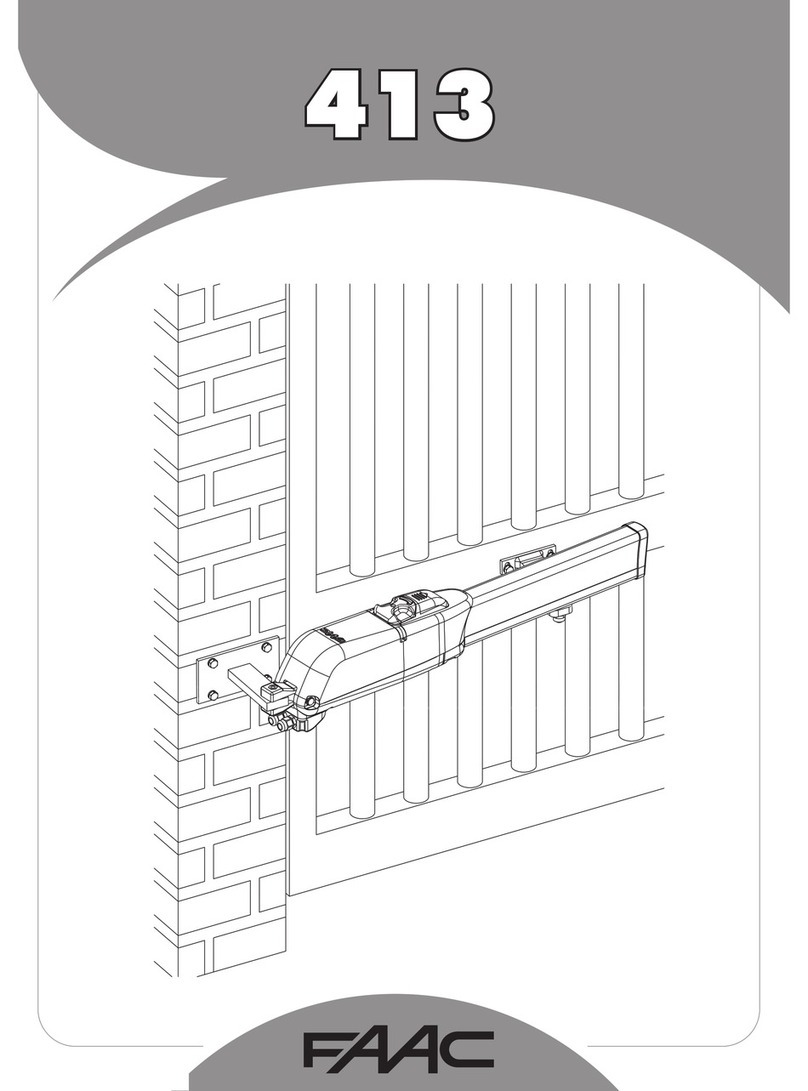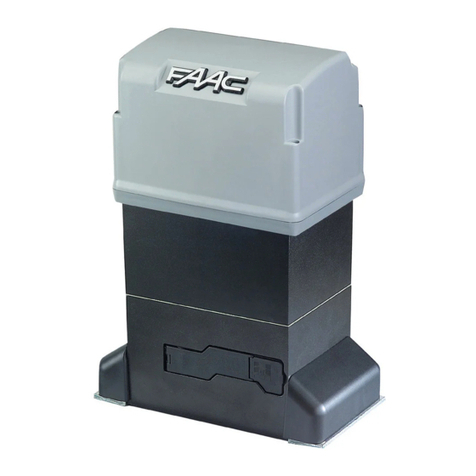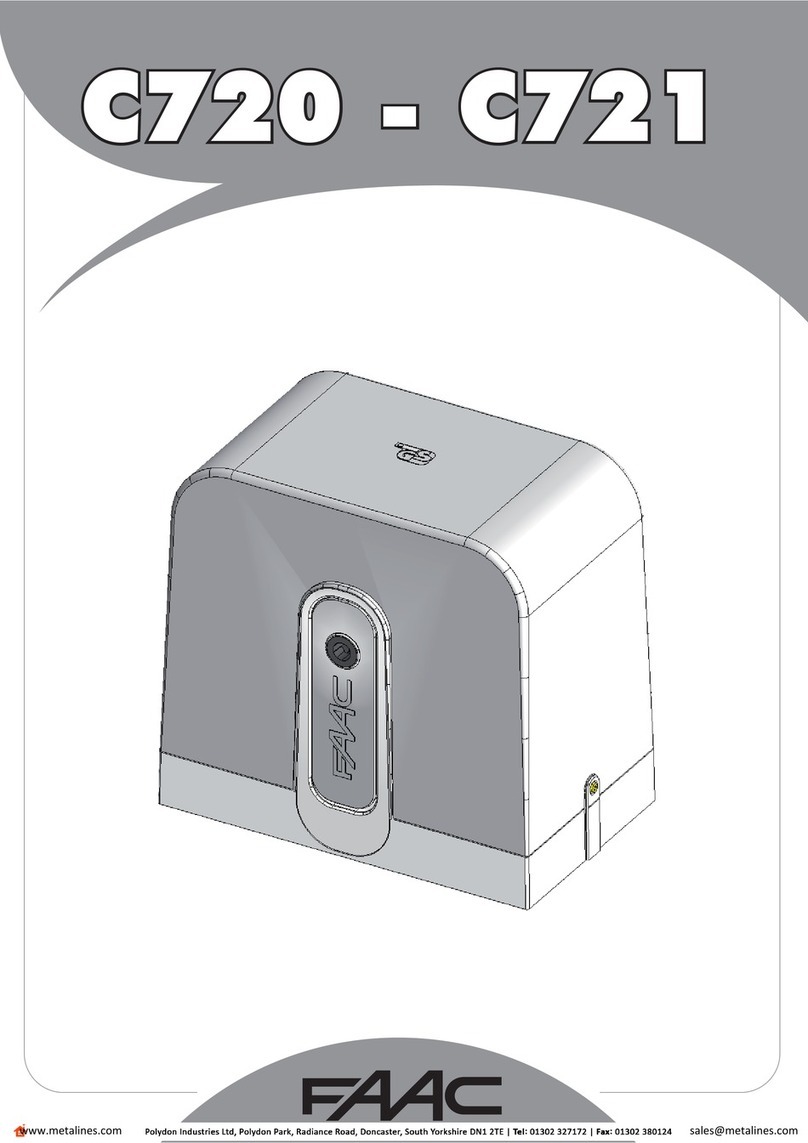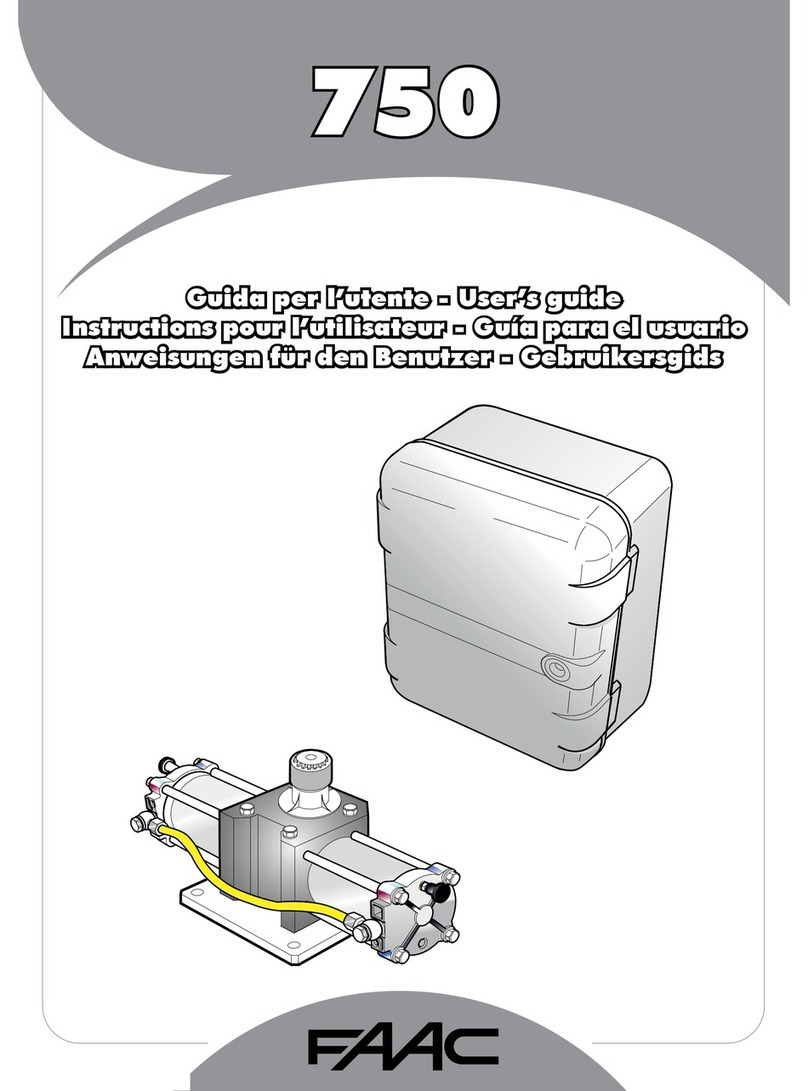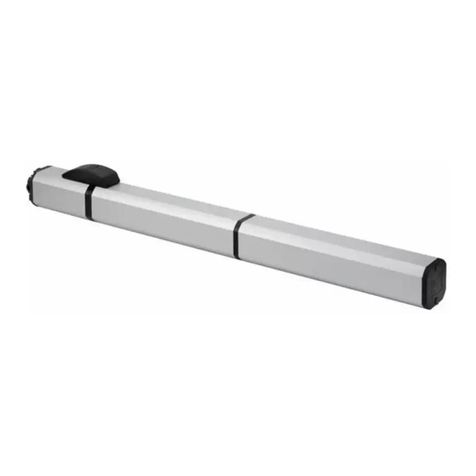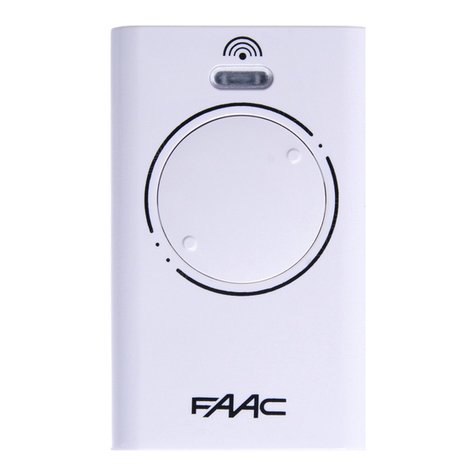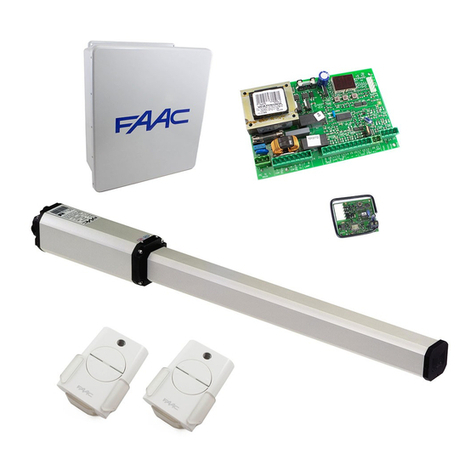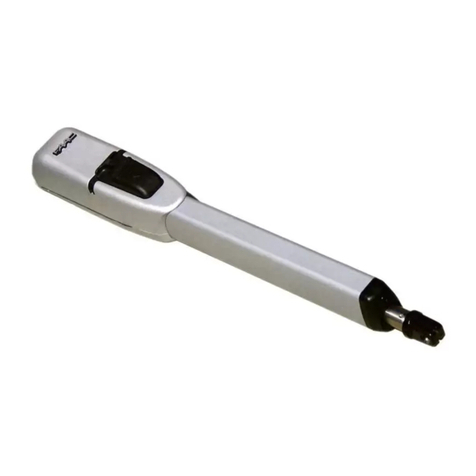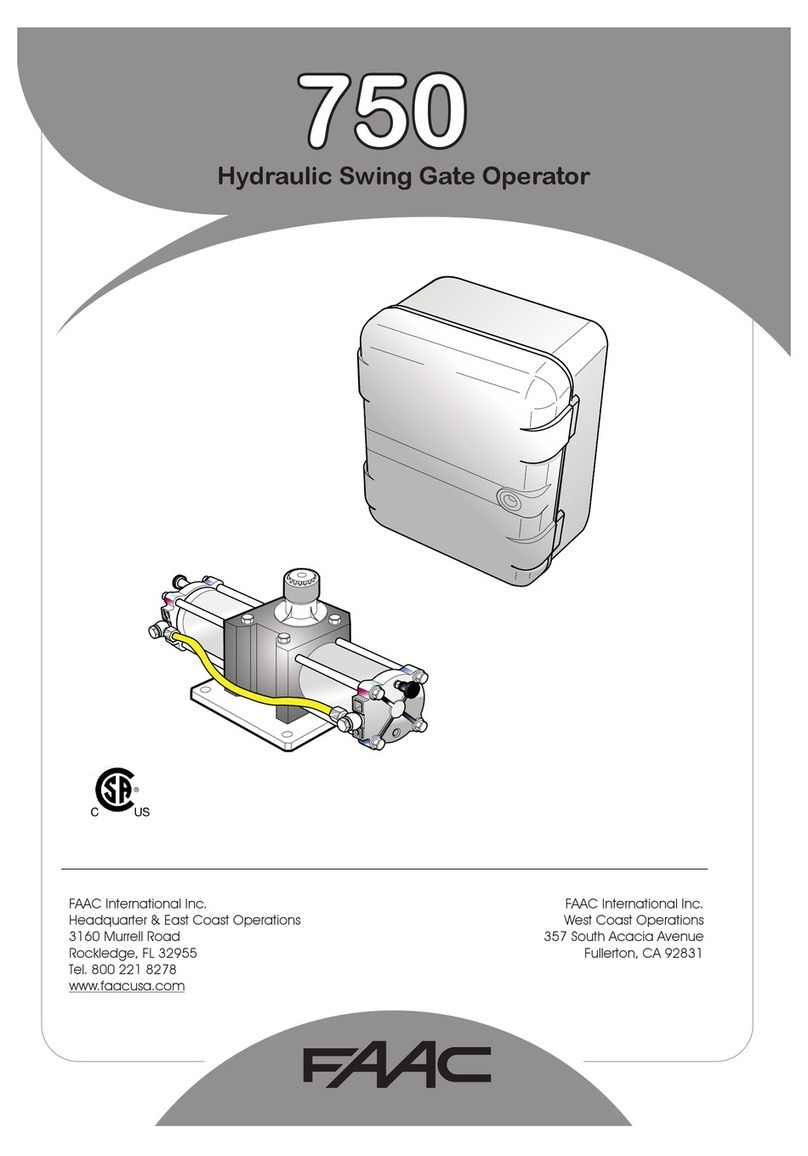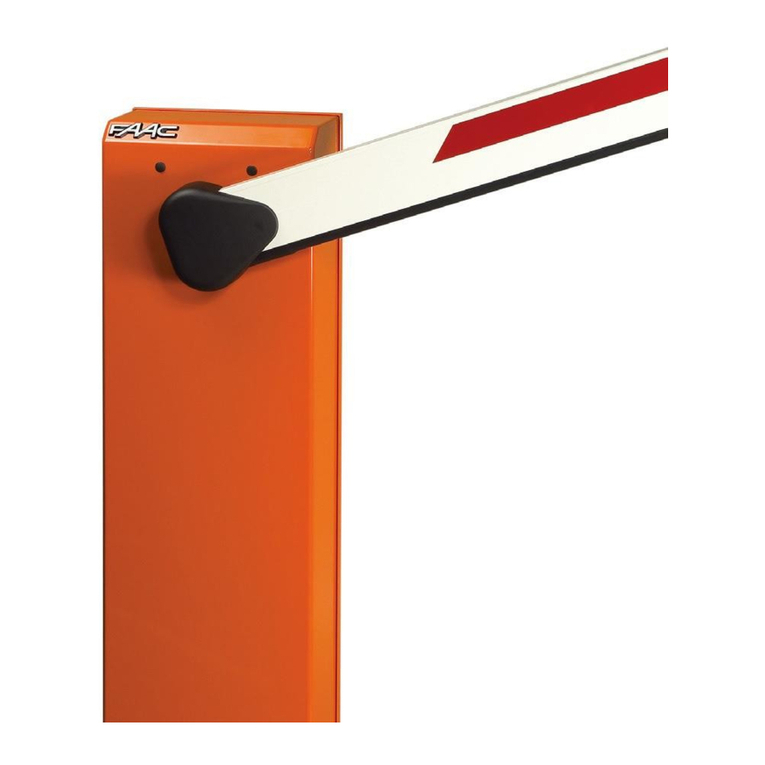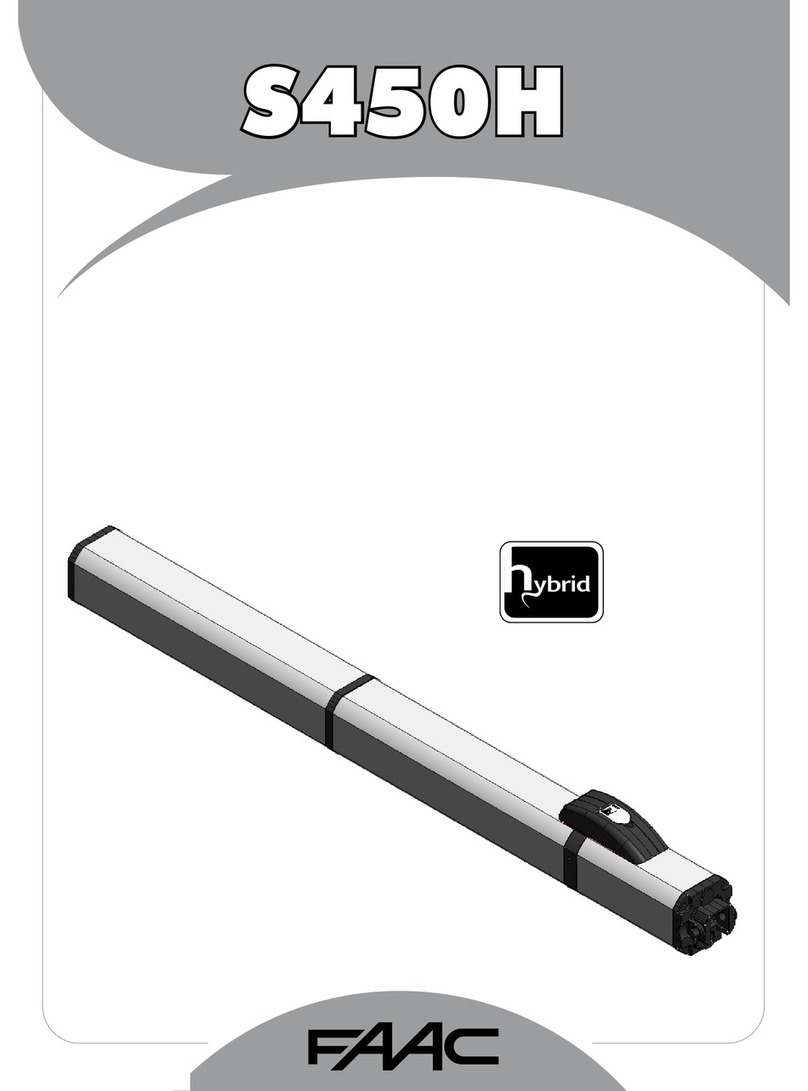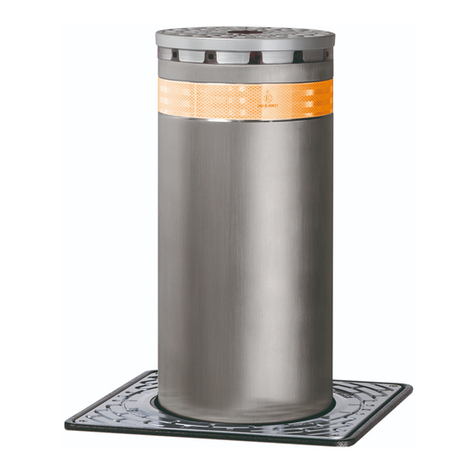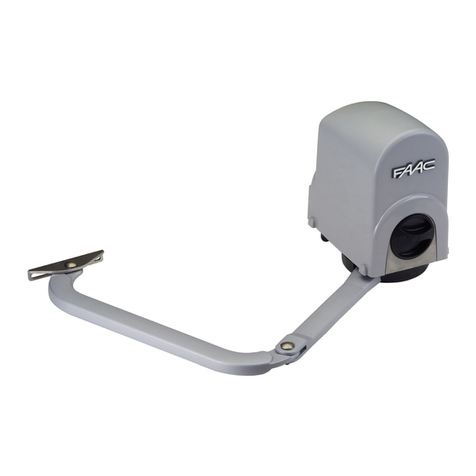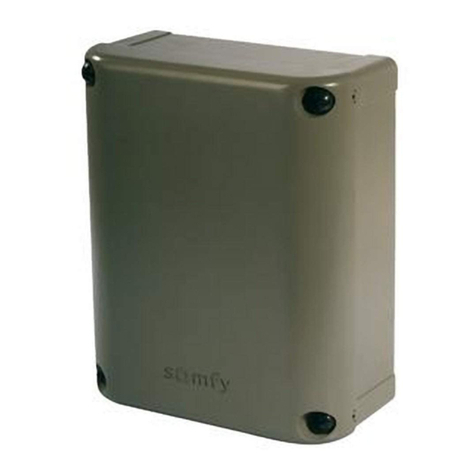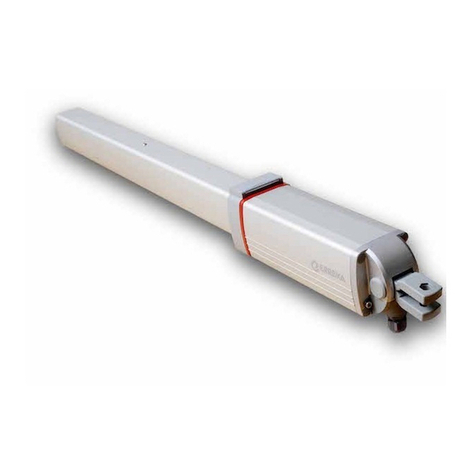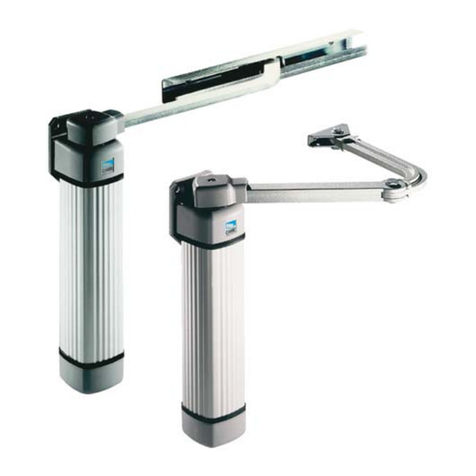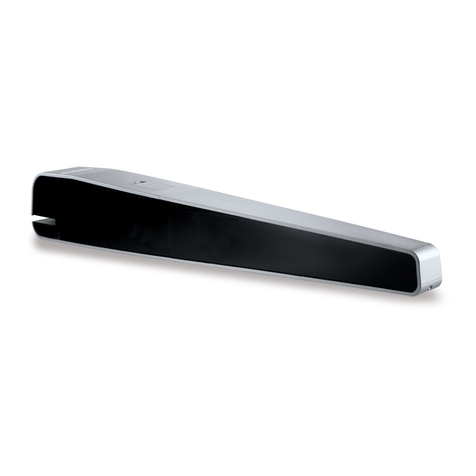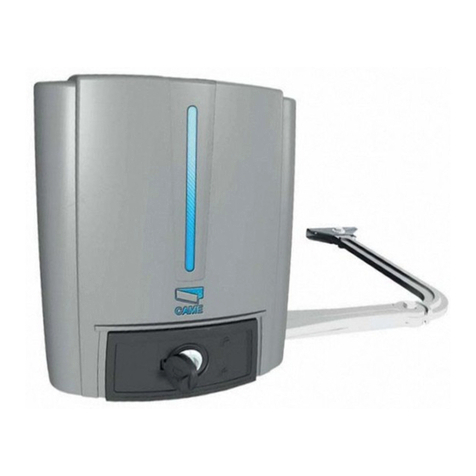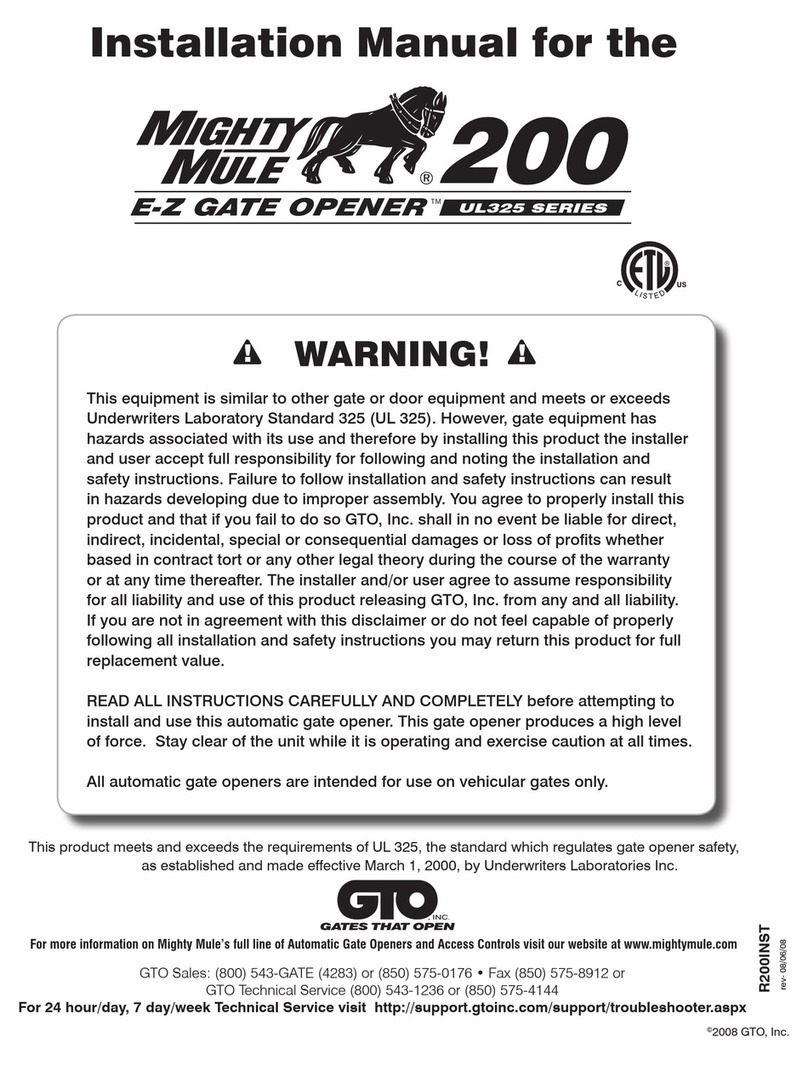
FAAC S.p.A. Soc. Unipersonale
Via Calari, 10 - 40069 Zola Predosa BOLOGNA - ITALY
Tel. +39 051 61724 - Fax +39 051 09 57 820
www.faac.it - www.faacgroup.com
© Copyright FAAC S.p.A. from 2019. All rights reserved.
No part of this manual may be reproduced, archived, distributed to third
parties nor copied in any other way, in any format and with any means,
be it electronic, mechanical or by photocopying, without prior written
authorisation by FAAC S.p.A.
All names and trademarks mentioned are the property of their respective
manufacturers.
Customers may make copies exclusively for their own use.
This manual was published in 2019.
© Copyright FAAC S.p.A. del 2019. Todos los derechos están reservados.
No puede reproducirse, archivarse, distribuirse a terceros ni copiarse de
ningún modo, ninguna parte de este manual, con medios mecánicos o
mediante fotocopia, sin el permiso previo por escrito de FAAC S.p.A.
Todos los nombre y las marcas citadas son de propiedad de los respectivos
fabricantes.
Los clientes pueden realizar copias para su uso exclusivo.
Este manual se ha publicado en 2019.
© Copyright FAAC S.p.A. van 2019. Alle rechten voorbehouden.
Niets uit deze handleiding mag gereproduceerd, gearchiveerd, aan derden
openbaar gemaakt of op andere wijze gekopieerd worden, in om het even
welke vorm en met geen enkel middel, noch elektronisch, mechanisch of
via fotokopiëren, zonder schrfitelijke toestemming vooraf van FAAC S.p.A.
Alle vermelde namen en merken zijn eigendom van de respectievelijke
fabrikanten.
De klantenmogenkopieënmaken die enkelvooreigengebruikbestemdzijn.
Dez handleiding werd in 2019 gepubliceerd.
© Copyright FAAC S.p.A. ab dem 2019. Alle Rechte vorbehalten.
KeinTeil dieses Handbuchs darf reproduziert, gespeichert, an Dritte weiter-
gegeben oder sonst auf eine beliebige Art in einem beliebigen Format und
mit beliebigen Mitteln kopiert werden, weder mit elektronischen, noch me-
chanischenoder durchFotokopieren, ohnedieGenehmigung vonFAACS.p.A.
AlleerwähntenNamenund Markensind Eigentum der jeweiligenHersteller.
Die Kunden dürfen nur für den Eigengebrauch Kopien anfertigen.
Dieses Handbuch wurde 2019 veröffentlicht.
© Copyright FAAC S.p.A. depuis 2019. Tous droits réservés.
Aucune partie de ce manuel ne peut être reproduite, archivée ou distribuée
à des tiers ni copiée, sous tout format et avec tout moyen, qu’il soit électro-
nique, mécanique ou par photocopie, sans le consentement écrit préalable
de FAAC S.p.A.
Tous les noms et les marques cités sont la propriété de leurs fabricants
respectifs.
Les clients peuvent faire des copies pour leur usage exclusif.
Ce manuel a été publié en 2019.
© Copyright FAAC S.p.A. dal 2019. Tutti i diritti riservati.
Nessunapartediquestomanualepuòessere riprodotta,archiviata,distribuita
a terzi né altrimenti copiata, in qualsiasi formato e con qualsiasi mezzo, sia
essoelettronico,meccanicoo tramitefotocopia,senzail preventivoconsenso
scritto di FAAC S.p.A.
Tutti i nomi e i marchi citati sono di proprietà dei rispettivi fabbricanti.
I clienti possono effettuare copie per esclusivo utilizzo proprio.
Questo manuale è stato pubblicato nel 2019.
© Copyright FAAC S.p.A. from 2019. All rights reserved.
No part of this manual may be reproduced, archived, distributed to third parties
nor copied in any other way, in any format and with any means, be it electronic,
mechanical or by photocopying, without prior written authorisation by FAAC S.p.A.
All names and trademarks mentioned are the property of their respective ma-
nufacturers.
Customers may make copies exclusively for their own use.
This manual was published in 2019.
© Copyright FAAC S.p.A. del 2019. Todos los derechos están reservados.
No puede reproducirse, archivarse, distribuirse a terceros ni copiarse de ningún
modo, ninguna parte de este manual, con medios mecánicos o mediante fotocopia,
sin el permiso previo por escrito de FAAC S.p.A.
Todos los nombre y las marcas citadas son de propiedad de los respectivos fabri-
cantes.
Los clientes pueden realizar copias para su uso exclusivo.
Este manual se ha publicado en 2019.
© Copyright FAAC S.p.A. van 2019. Alle rechten voorbehouden.
Niets uit deze handleidingmaggereproduceerd, gearchiveerd, aanderden openbaar
gemaakt of op andere wijze gekopieerd worden, in om het even welke vorm en
met geen enkel middel, noch elektronisch, mechanisch of via fotokopiëren, zonder
schrfitelijke toestemming vooraf van FAAC S.p.A.
Allevermeldenamenen merkenzijn eigendom van de respectievelijke fabrikanten.
De klanten mogen kopieën maken die enkel voor eigen gebruik bestemd zijn.
Dez handleiding werd in 2019 gepubliceerd.
© Copyright FAAC S.p.A. ab dem 2019. Alle Rechte vorbehalten.
KeinTeil dieses Handbuchs darf reproduziert, gespeichert, an Dritte weitergegeben
oder sonst auf eine beliebige Art in einem beliebigen Format und mit beliebigen
Mitteln kopiert werden, weder mit elektronischen, noch mechanischen oder durch
Fotokopieren, ohne die Genehmigung von FAAC S.p.A.
Alle erwähnten Namen und Marken sind Eigentum der jeweiligen Hersteller.
Die Kunden dürfen nur für den Eigengebrauch Kopien anfertigen.
Dieses Handbuch wurde 2019 veröffentlicht.
© Copyright FAAC S.p.A. depuis 2019. Tous droits réservés.
Aucune partie de ce manuel ne peut être reproduite, archivée ou distribuée à
des tiers ni copiée, sous tout format et avec tout moyen, qu’il soit électronique,
mécanique ou par photocopie, sans le consentement écrit préalable de FAAC S.p.A.
Tous les noms et les marques cités sont la propriété de leurs fabricants respectifs.
Les clients peuvent faire des copies pour leur usage exclusif.
Ce manuel a été publié en 2019.
© Copyright FAAC S.p.A. dal 2019. Tutti i diritti riservati.
Nessuna parte di questomanuale puòessere riprodotta, archiviata, distribuita a terzi
né altrimenti copiata, inqualsiasi formato econqualsiasi mezzo, sia esso elettronico,
meccanico o tramite fotocopia, senza il preventivo consenso scritto di FAAC S.p.A.
Tutti i nomi e i marchi citati sono di proprietà dei rispettivi fabbricanti.
I clienti possono effettuare copie per esclusivo utilizzo proprio.
Questo manuale è stato pubblicato nel 2019.
© Copyright FAAC S.p.A. rok 2019. Wszelkie prawa zastrzeżone.
Zabronione jest kopiowanie, archiwizowanie, dystrybuowanie lub przekazywanie
na jakimkolwiek nośniku elektronicznym lub mechanicznym, w tym kserokopia,
jakiejkolwiek części niniejszego podręcznika bez pisemnej zgody FAAC S.p.A.
Wszystkie wymienione nazwy i marki są własnością ich producentów.
Klienci mogą wykonywać kopie wyłącznie na własny użytek.
Niniejszy podręcznik został opublikowany w roku 2019.


